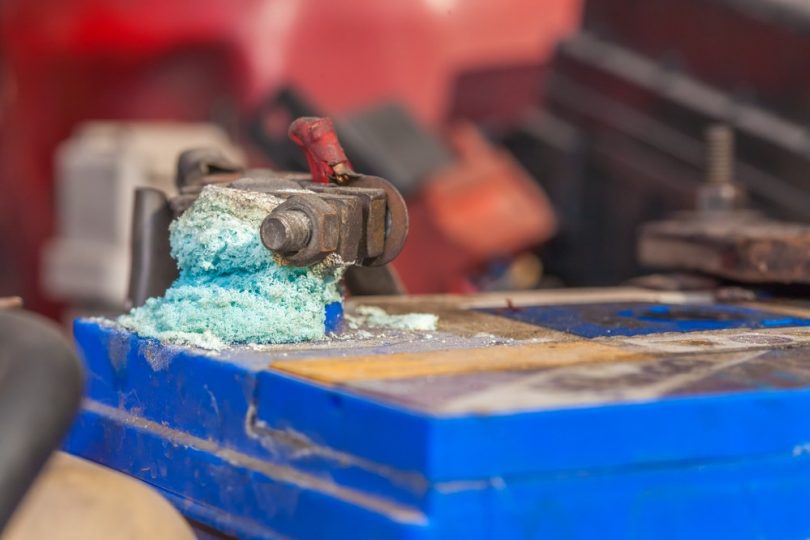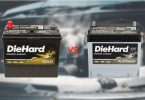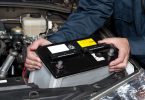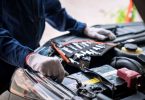When you open your vehicle’s hood and inspect your battery, do you notice a blue, white, or greenish substance on the battery terminal? Terminal corrosion can occur if you have been driving for many years with the same car battery. The idea is to comprehend the causes and know how to remedy them.
Let’s break down exactly what battery terminal corrosion is, the causes, and the solutions available.
What is battery terminal corrosion?
Metals are commonly prone to corrosion. This means that the metal in your car battery is not exempt. Weakened performance of your battery and electrical issues often stem from corroded batteries.
The reason why this happens is that hydrogen gas gets discharged from the battery acid. This mixes with other substances in the air while under your vehicle’s hood. You can visually see the damage and corrosion on the battery when this transpires.
Some other reasons are chemical reactions to clamps made from copper and an alternator overcharging the vehicle’s battery over a long time.
What happens when the battery terminal gets corroded?
When your engine is on, the alternator resumes control of powering your vehicle and all the electrical functions. When there is battery terminal corrosion, energy moves less adeptly through the terminal resulting in decreased power to your battery.
Reasons the Battery Terminal Corrodes
1. Overfilled battery
For a battery to function correctly, you need battery water. An overabundance of water can cause problems. You must ensure the water doesn’t surpass the highest battery markers. If battery water comes out of the vents and touches the battery terminals, it will cause it to corrode.
2. Overcharging
A battery that is overcharged can result in terminal corrosion. When this happens, it will heat up, and your battery’s volume will increase, making it like a kinetic energy depository.
3. Age of the battery
A well-maintained battery can have a five-year lifespan; however, it might begin to weaken and malfunction after this time. You might also start to see corrosion happening on the terminals, cutting the battery’s efficiency.
Remember that batteries will function differently and not all of them will technically last five years. It will depend on many factors, but if you notice that your engine performance is lacking, it could signal that your battery is failing.
4. Copper clamps reaction
Clamps connect the wires and the battery. Many clamps are made from copper, which doesn’t corrode. It happens when electricity passes through it, creating copper sulfate, which makes the terminals corrode.
5. Hydrogen gas leakage
Actions inside the battery make hydrogen gas. The battery modifies the acid to an electric current. Hydrogen gas can be dangerous, especially when it leaks from the battery and interacts with different gases.
This will create battery terminal corrosion that can occur either on the positive or negative terminals. The positive terminal corrosion is usually an indication of overcharging, whereas undercharging results from the negative terminal corrosion.
6. Electrolyte leakage
Battery fluid can leak from an impaired battery. After this occurs, the electrolytes accrue on the battery terminals, and corrosion appears. It mostly happens in lead-acid batteries but can also develop in hybrid cars because they use a lithium-ion battery.
How to Remove Corrosion?
1. Disconnect the battery
For safety reasons, it’s suggested that you disconnect your battery terminals before working on it, or you might get electrocuted. It could also result in a fire. It’s simple to do, so there shouldn’t be an excuse for not disconnecting the battery.
2. Check for damage
If there is corrosion, it will be pretty apparent. You can physically see the damage or corrosion on your battery terminal. Other symptoms of damage will be battery failure, like headlights that are dim or slow cranking.
3. Remove the corrosion
You can easily remove the corrosion with a battery cleaning agent, baking soda solution, and even soda drinks.
Battery cleaning agents can be easily purchased online or in stores in the automotive department. Follow the instructions to clean the corrosion.
Baking soda can be mixed with one cup of hot water. Dip a retired toothbrush into the solution and then scrub the corrosion off. If the toothbrush doesn’t entirely remove it, think about purchasing a cleaner brush specifically for battery terminals. After everything is scrubbed clean, dry off the battery thoroughly.
Soft drinks, believe it or not, can be used to remove corrosion because most sodas have the ingredient carbonic acid in them. Firstly, pour the soft drink on the battery terminals and wash it off with a sponge.
4. Clean and dry
After cleaning the corrosion off the battery, you dry everything thoroughly.
5. Apply corrosion-preventative elements
To prevent corrosion in the future, apply some preventative components (discussed below).
6. Reconnect the battery
Once everything is completed, reconnect the battery, and you are good to go!
How to Prevent Battery Terminals From Corroding?
1. Regular maintenance
With regular maintenance on your vehicle, you can prevent battery terminal corrosion. It’s also important not to abuse the car battery by drawing unnecessary power. Using car accessories and equipment for a long time while the engine isn’t on and running will weaken your battery.
If your battery is in great shape, you are less likely to have clamps and or terminal corrosion.
2. Anti-corrosive sprays
Numerous sprays on the market will help avoid battery terminal corrosion. These sprays can be found in many retail and automotive stores.
3. Petroleum jelly
A low-cost way to prevent corrosion is by applying petroleum jelly to the terminals. First, remove the cables from the battery terminals. Next, rub one tablespoon of petroleum jelly on both terminals.
Make sure that when reconnecting the battery, go with the red (positive cable) first and then the black (negative) cable.
4. Dielectric grease
Corrosion can be stopped with dielectric grease. This product can be found at home improvement, auto parts, and hardware stores. Ensure the cables to your battery are disconnected when you administer the grease.
5. Copper compression terminals
Having copper clamps aids in stopping corrosion. It’s because the electric current is distributed evenly because of the tinned copper.
6. Careful charging
Battery terminal corrosion can happen because of overcharging or undercharging. If this happens, you need to take it to a mechanic.
Undercharging can occur when you leave your air conditioning or amplifier on for too long. This can result in corrosion.
FAQs
Q. Does corrosion mean I need a new battery?
Not necessarily. If a lot of corrosion has happened on the terminals, there will be a lower current, resulting in power loss or inability to turn on the vehicle. If cleaning the corrosion doesn’t help, it would be a good idea to seek professional help.
Q. Can you touch battery corrosion?
No, touching the battery corrosion with your bare hands isn’t advised. You should avoid touching it, or it can cause skin damage.
Q. Can corrosion drain a car battery?
Absolutely. If your vehicle’s battery has corrosion, this could result in a non-working car. Corrosion drains the power out of your battery, shortening its lifespan.
Q. Is it safe to drive a car with a corroded battery?
Technically, you can drive your car even with a corroded battery. The problem is if you don’t take care of the corrosion, it will affect your car’s battery over time, to the point that your car won’t start up.
Q. Can battery acid start a fire?
Yes! A leaking battery can result in a fire. It happens when the positive and negative posts touch something that is metal. Heat will build up, and a fire can start.










Leave a Comment